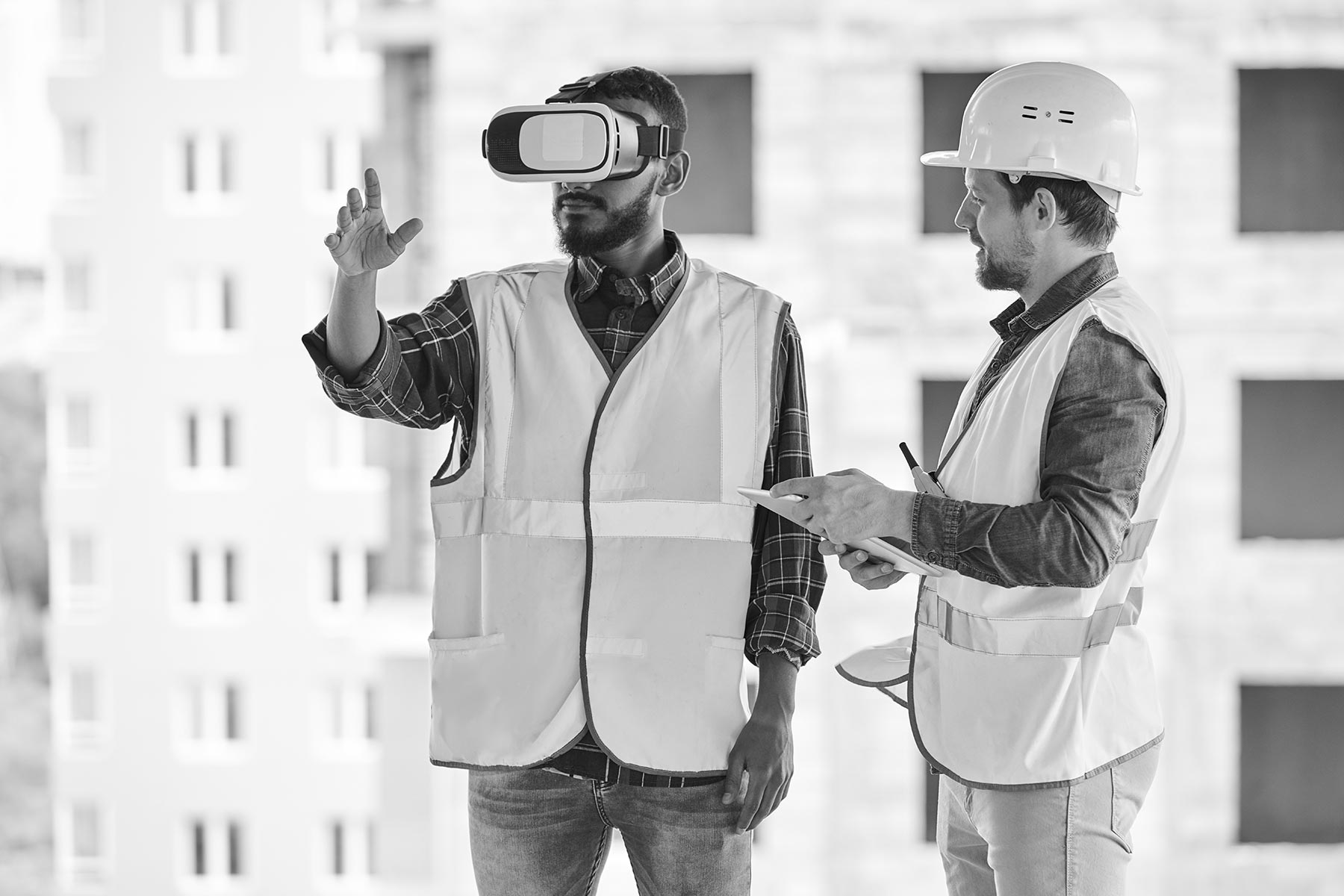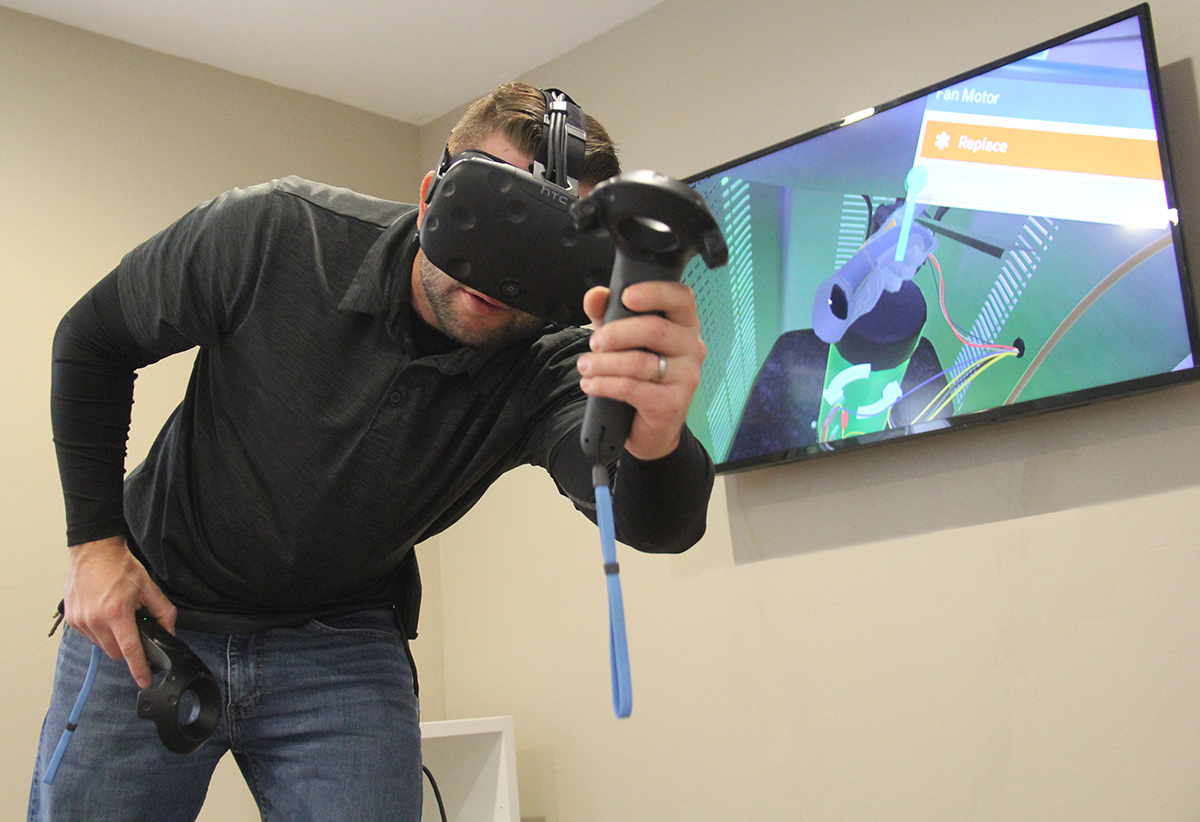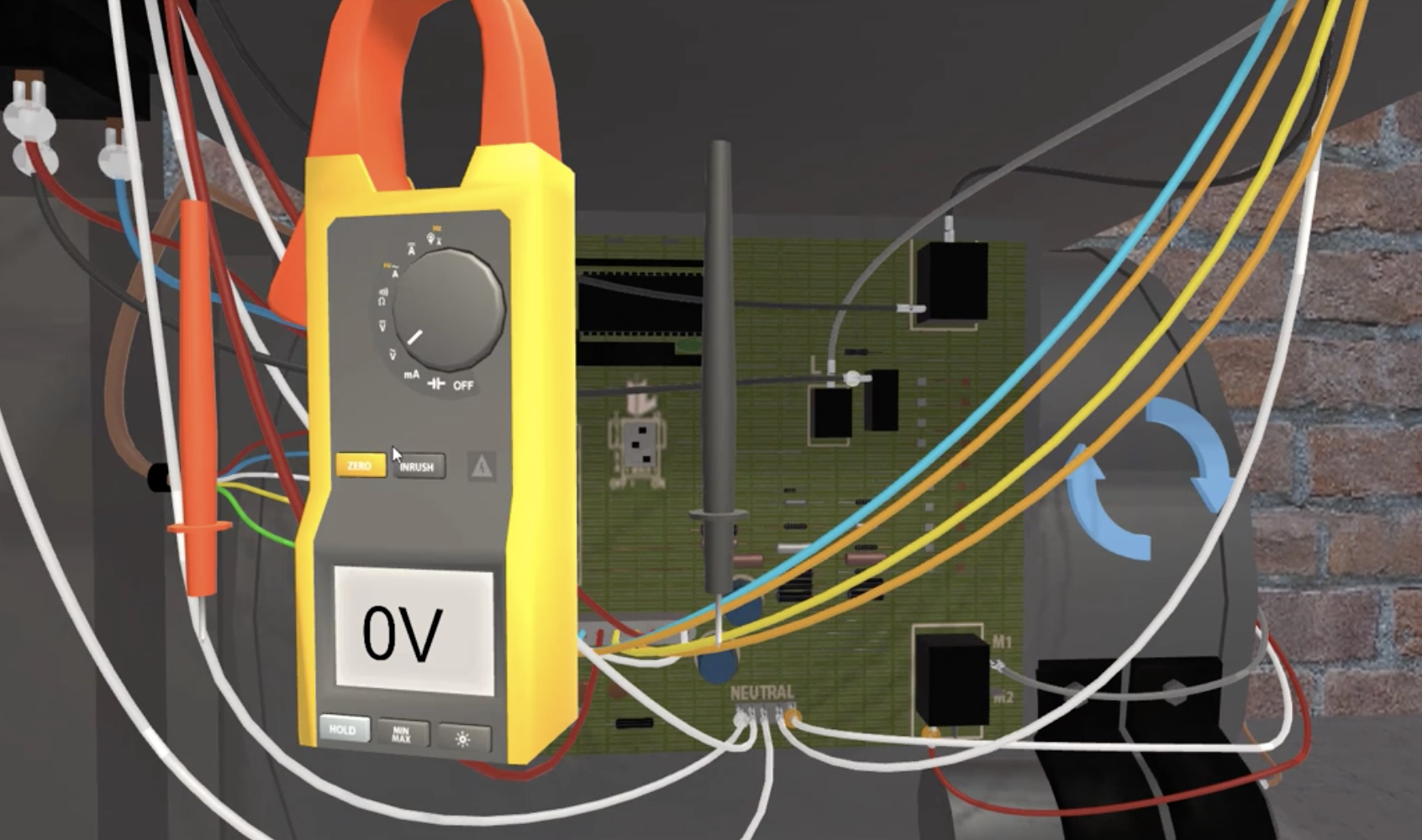Digital experiential learning, also know as immersive learning, is a concept that places individuals in an interactive learning environment, either physically or virtually. The goal is to replicate and engage in real-world scenarios to teach particular skills or techniques.
Traditional methods of learning, such as classroom instruction and videos, are slowly being phased out in favor of a more hands-on approach like digital experiential learning.
When supported by VR, these methods allow us to learn skills through 3D simulations that closely reflect real-world scenarios. This type of interactive learning plays a huge role in boosting memory recall, and is one of the best ways to learn and practice hands-on skills, like those of the skilled trades.
Read 10 case studies about the effectiveness of training with VR.
Defining Digital Experiential Learning with Respect to Technology
Immersive learning, then and now
In the past, digital experiential learning or immersive learning, was used to describe experiences where an individual was physically placed in a new environment to develop or master a new skill.
Take pilot training, for example
Pilot training has undergone a massive evolution of techniques over the years; the earliest was a process called “gliding.”
Gliding was the early version of experiencing flight controls. When gliding, pilots-in-training would sit in a constructed training glider in a training center, which was exposed to a strong facing wind. This would simulate the feeling of the controls and challenge trainees to do things like keep the wings in a horizontal position.
Now, thanks to virtual reality, digital experiential learning offers more flexibility and opportunities for learning new skills:
-
- It doesn’t require expensive simulation equipment
- It’s not necessary to travel to a physical training center
- You don’t need to schedule training time with experts
- There’s no limit to the types of training scenarios that can be simulated
Another benefit to training with VR, is that it enables new skills and information to be acquired with a reduction in the “sink-or-swim” experience that’s common to real-world scenarios. Learners can practice and repeat as much as necessary.
Let’s get physical
Completely immersive virtual settings capture full-body motion. This allows people to use their full range of physical motion to interact with objects in the virtual environment. In this environment, people can learn physical activities better than by watching video-based lessons, allowing them to more effectively retain and apply skills to functions in the real world.
To keep reading more about digital experiential learning and why it’s such a critical tool for hands-on training like HVAC, download our free eBook, The Power of Learning by Doing.
Fun Facts About Digital Experiential Learning
1. VR provides meaning and motivation (it’s fun)
Aside from simply being fun, VR provides more relevance to well-constructed lessons and simulations, allowing you to better retain information learned, while immersed in the real world.
Researchers recently produced a report that revealed how the technology provides a useful system, for what’s referred to as, generative learning.
To sum it up, the combination of cognitive stimuli (i.e. what you see and hear), virtual elements you interact with during immersion, and the ability to segment (basically, learning things in chunks), is particularly helpful when learning a new skill. We all learn at different rates, meaning some of us can pick up a process quickly, but others need to repeat a few times before a lesson clicks.
2. You forget less (especially with boring subjects)
Recall a fun class from your past, or a place you visited and enjoyed. How do you remember it?
Chances are, you have a pretty detailed memory about the events, your surroundings, and other sensations, compared to something you didn’t find interesting.
This is why developers are looking to apply VR to events, like corporate training, and to college curriculums to enhance retention of information delivered in various lessons. It’s not going to make every lesson a fun-filled adventure, but VR greatly increases engagement during lessons that are otherwise boring.
3. Digital experiential learning can simulate sensation
Your body doesn’t always require physical stimulation to feel a sensation. Your brain can do this on its own, based simply on what you see and hear.
In a 2014 study, researchers discovered that VR could be used to produce an analgesic effect, reducing sensations of pain and anxiety.
You can test this phenomenon of phantom sensations yourself. When playing certain VR games, if you hop from a ground-level location to a higher elevation and look down, you will experience the sensation of height, even though you haven’t really moved.
The working theory is that this kind of immersion could help some to overcome phobias such as heights, claustrophobia and so on, through practice and exposure.
Final Thoughts
Digital experiential learning supported by VR is proving that it has the capacity to completely transform how we learn hands-on skills.
At Interplay Learning, we’re on the frontier of creating immersive learning experiences for the skilled trades. We continually strive to make impactful lessons, supported with virtual reality, to seamlessly transfer abilities into the real world.
Resources:
Hsiu-Mei Huang, & Shu-Sheng Liaw. (2018). An Analysis of Learners’ Intentions Toward Virtual Reality Learning Based on Constructivist and Technology Acceptance Approaches. International Review of Research in Open & Distance Learning, 19(1), 91–115.
Parong, J., & Mayer, R. E. (2018). Learning science in immersive virtual reality. Journal of Educational Psychology, 110(6), 785–797. https://doi.org/10.1037/edu0000241
Triberti, S., Repetto, C., & Riva, G. (2014). Psychological Factors Influencing the Effectiveness of Virtual Reality-Based Analgesia: A Systematic Review. CyberPsychology, Behavior & Social Networking, 17(6), 335–345. https://doi.org/10.1089/cyber.2014.0054
Neal Kimball, C., & Turner, S. (2018). Nurturing the apprentice: An immersion training in qualitative research. Qualitative Psychology, 5(2), 290–299. https://doi.org/10.1037/qup0000105













